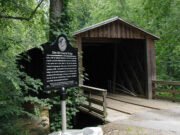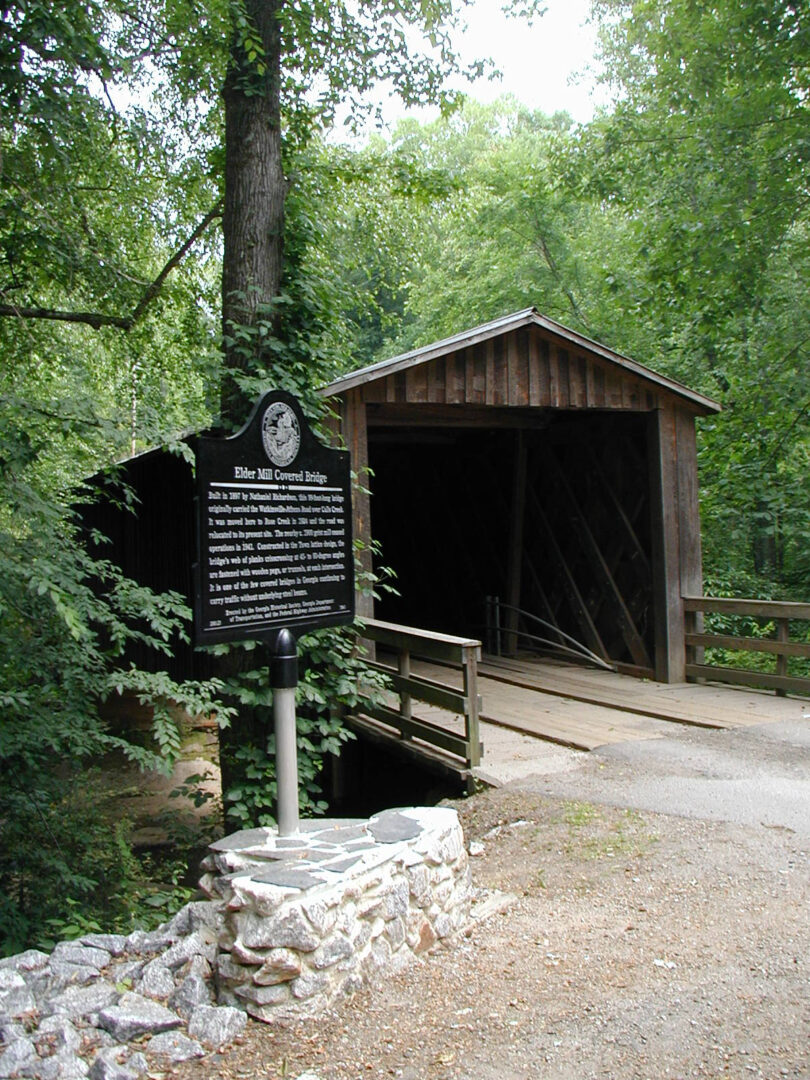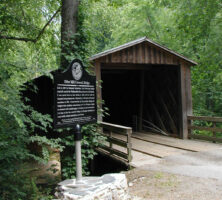Oconee County comprises 184 square miles in northeast Georgia. The state’s 137th county, it was created from part of western Clarke County in 1875 by the Georgia General Assembly. Oconee County was named for the river flowing along part of its eastern border, whose name in turn comes from a Native American word meaning “spring of the hills.”
The county was created to satisfy western Clarke County residents’ demand for their own county after the county seat moved from the less populous Watkinsville to the thriving university town of Athens in 1872.
The newly formed Oconee County retained Watkinsville as its seat. The current courthouse (a New Deal project of U.S. president Franklin D. Roosevelt’s Works Progress Administration) was built in 1939 to replace a courthouse built in 1875. A 1998 expansion of the courthouse more than doubled its size. A $14 million, 44,000 square-foot administrative building opened in 2023, serving as the home to all non-judicial government offices that were once located in the Oconee County Courthouse, Government Annex building, and Elections building.
In addition to Watkinsville, Oconee County’s incorporated communities are Bishop, Bogart, and North High Shoals. Bogart, on the county’s northern border, was founded in 1869 and was originally named for Osceola, a Creek-Seminole Native American. The town was renamed Bogart for a railroad agent in 1892. Bishop, originally known as Greenwood Crossing, was named for local resident W. H. Bishop (one of the county’s original councilmen) and incorporated in 1890. North High Shoals, on the western border, was named for a rapid in the nearby Apalachee River. It was incorporated in 1933.
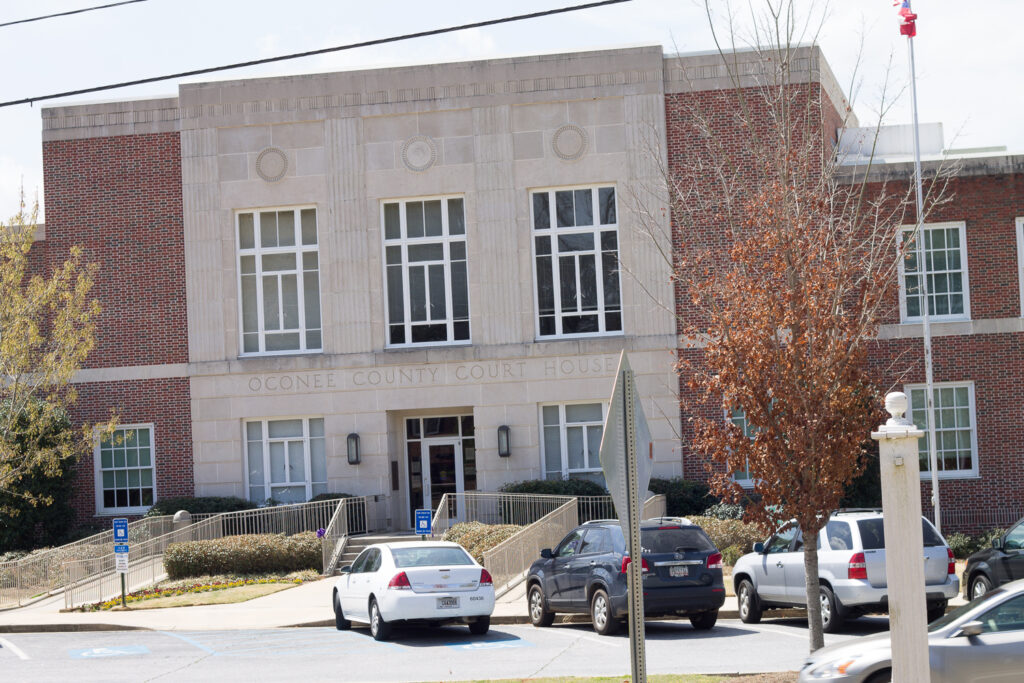
Today Oconee County is often characterized as a transitional community, moving away from its longtime rural foundations to become a bedroom community for Athens and even for Atlanta. Pine forests and cattle ranches have given way to residential subdivisions, shopping centers, and numerous art galleries. The construction of Georgia Highway 316 from west of Athens through Oconee County brought with it rising traffic, hundreds of shoppers, increases in sales tax revenues, and escalating property prices.
Points of interest include Eagle Tavern, located on North Main Street in Watkinsville. Built before 1801, possibly as a stronghold called Fort Edwards, the building was renovated by 1820 to serve as a stagecoach inn for Athens-bound travelers. The tavern was placed on the National Register of Historic Places in 1970. Elder Mill Covered Bridge, built in 1897 and moved to its current location just south of Watkinsville off State Road 15 in the 1920s, was restored during Jimmy Carter’s term as governor. One of the few covered bridges left in Georgia, it was placed on the National Register of Historic Places in 1994.
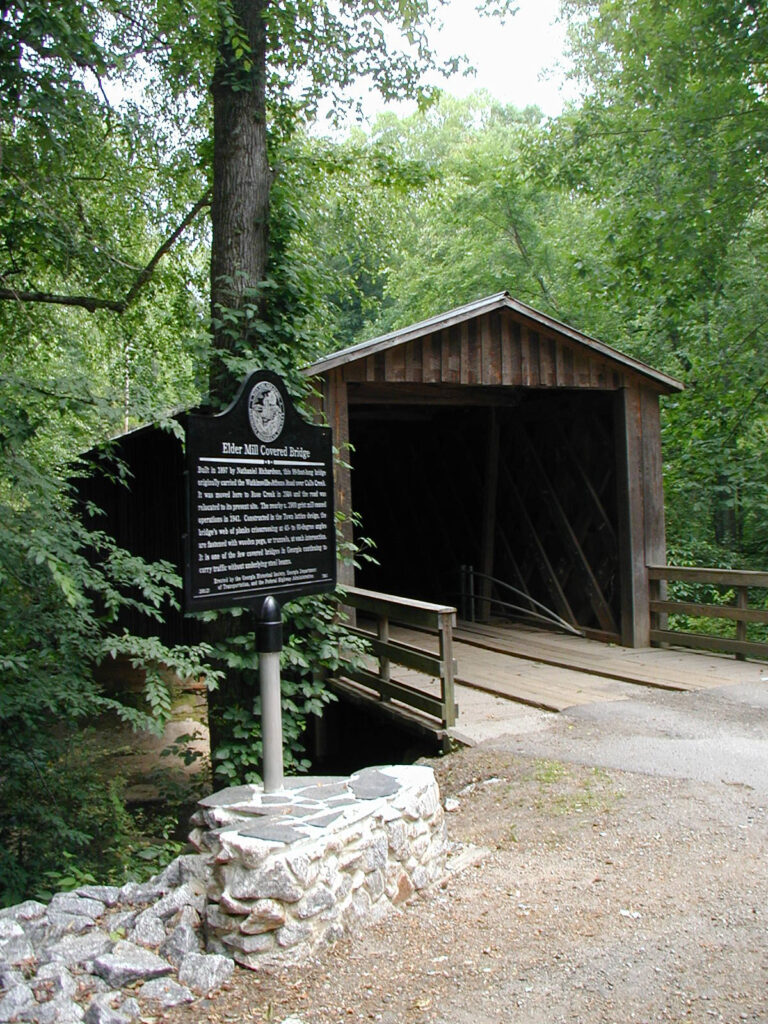
Notable Oconee County residents have included Lottie Moon, who worked as a governess in Farmington before becoming a Southern Baptist missionary to China. The founder of an annual fund drive to support international missions, Moon promoted the mission cause through her writing and establishing of churches and schools in China. Jeannette Rankin, who bought land in Bogart in the 1920s and in Watkinsville in the 1930s, was the first woman elected to the U.S. House of Representatives. A pacifist and champion of women’s rights, she left her Watkinsville property, Shady Grove, for the foundation of a charitable trust to fund women’s education. The Jeannette Rankin Foundation, based in Athens, remains active.
The University of North Georgia (formerly Gainesville State College), a University System of Georgia institution, has an Oconee campus that houses academic computing, a tutoring and testing center, and a library. This campus was formerly a satellite campus for Truett-McConnell College in Cleveland.
The county population was 41,799 at the time of the 2020 U.S. census, an increase from the 2010 population of 32,808.


